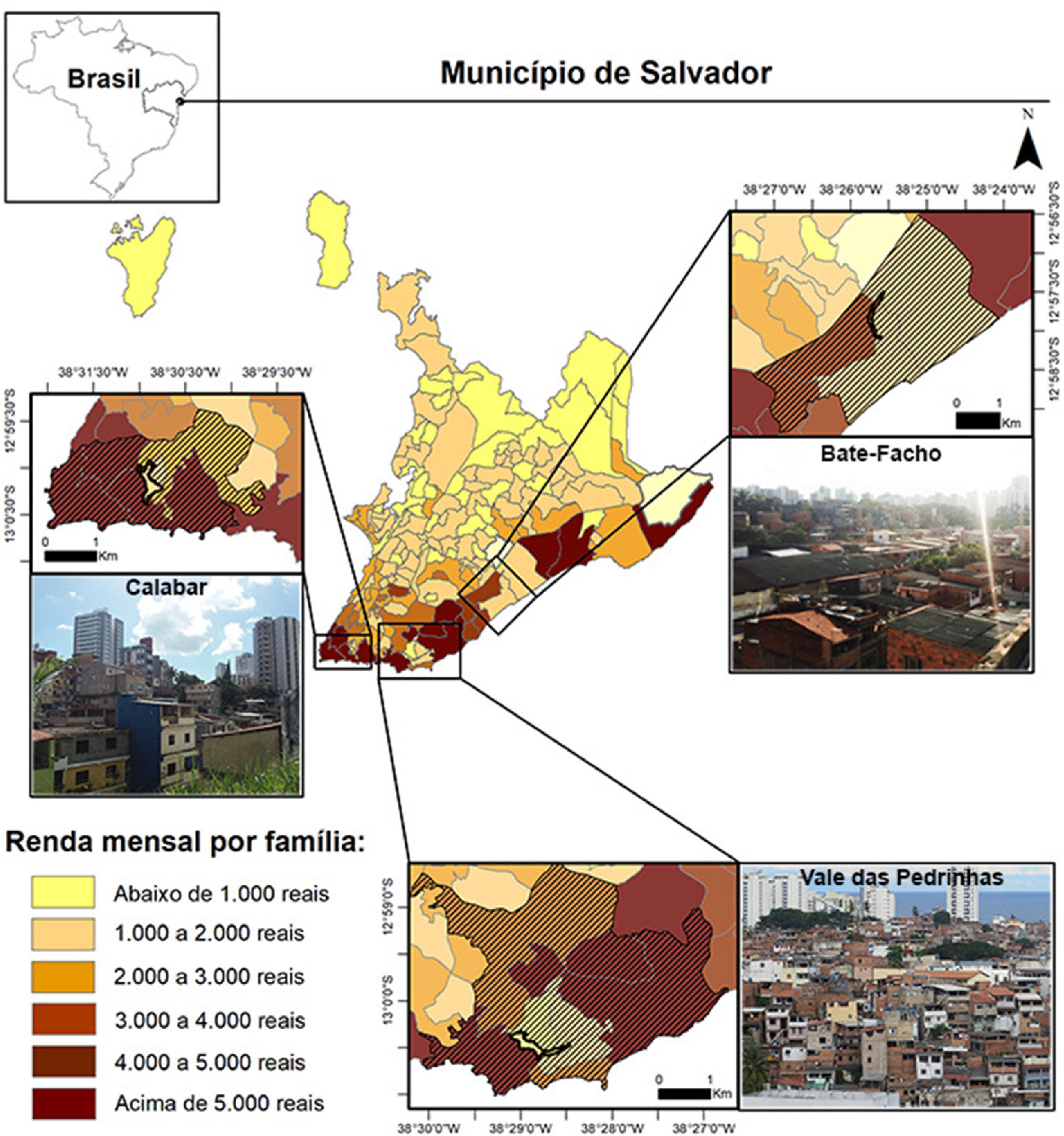Abstract
In this article, we aim to investigate whether the embeddedness of the shantytowns Calabar, Vale das Pedrinhas and Bate Facho (city of Salvador, State of Bahia) in a middle- and upper-class region fosters their populations’ socioeconomic integration. Assessing neighborhood effects on the material, social and symbolic dimensions based on semi-structured interviews, we highlight four factors that characterize these urban configurations: employment opportunities arising from the gated community dwellers’ demand for personal services; segmented access to urban services; social avoidance, except for employment relationships; and territorial stigmatization. We conclude that the variability found among the places regarding the individual’s socioeconomic integration is related to the public spaces’ capacity for enabling commercial exchanges and to the impact of criminality on the neighborhoods’ social organization.
Neighborhood effects; residential segregation; social segmentation; urban poverty; territorial stigmatization

 Observação: O mapa foi elaborado através do software ArcGIS (versão 10), a partir do arquivo vetorial (formato shapefile) dos bairros de Salvador, feito pela Companhia de Desenvolvimento Urbano do Estado da Bahia (Conder); a distribuição dos grupos sociais a partir do critério de renda média familiar baseia-se nos dados divulgados pela Conder (2016) e, respectivamente, no caso do Bate Facho, pelo Programa das Nações Unidas pelo Desenvolvimento (Pnud). Utiliza-se aqui a renda média familiar como critério exclusivo de identificação geográfica das três localidades.Fonte: elaboração própria.
Observação: O mapa foi elaborado através do software ArcGIS (versão 10), a partir do arquivo vetorial (formato shapefile) dos bairros de Salvador, feito pela Companhia de Desenvolvimento Urbano do Estado da Bahia (Conder); a distribuição dos grupos sociais a partir do critério de renda média familiar baseia-se nos dados divulgados pela Conder (2016) e, respectivamente, no caso do Bate Facho, pelo Programa das Nações Unidas pelo Desenvolvimento (Pnud). Utiliza-se aqui a renda média familiar como critério exclusivo de identificação geográfica das três localidades.Fonte: elaboração própria.